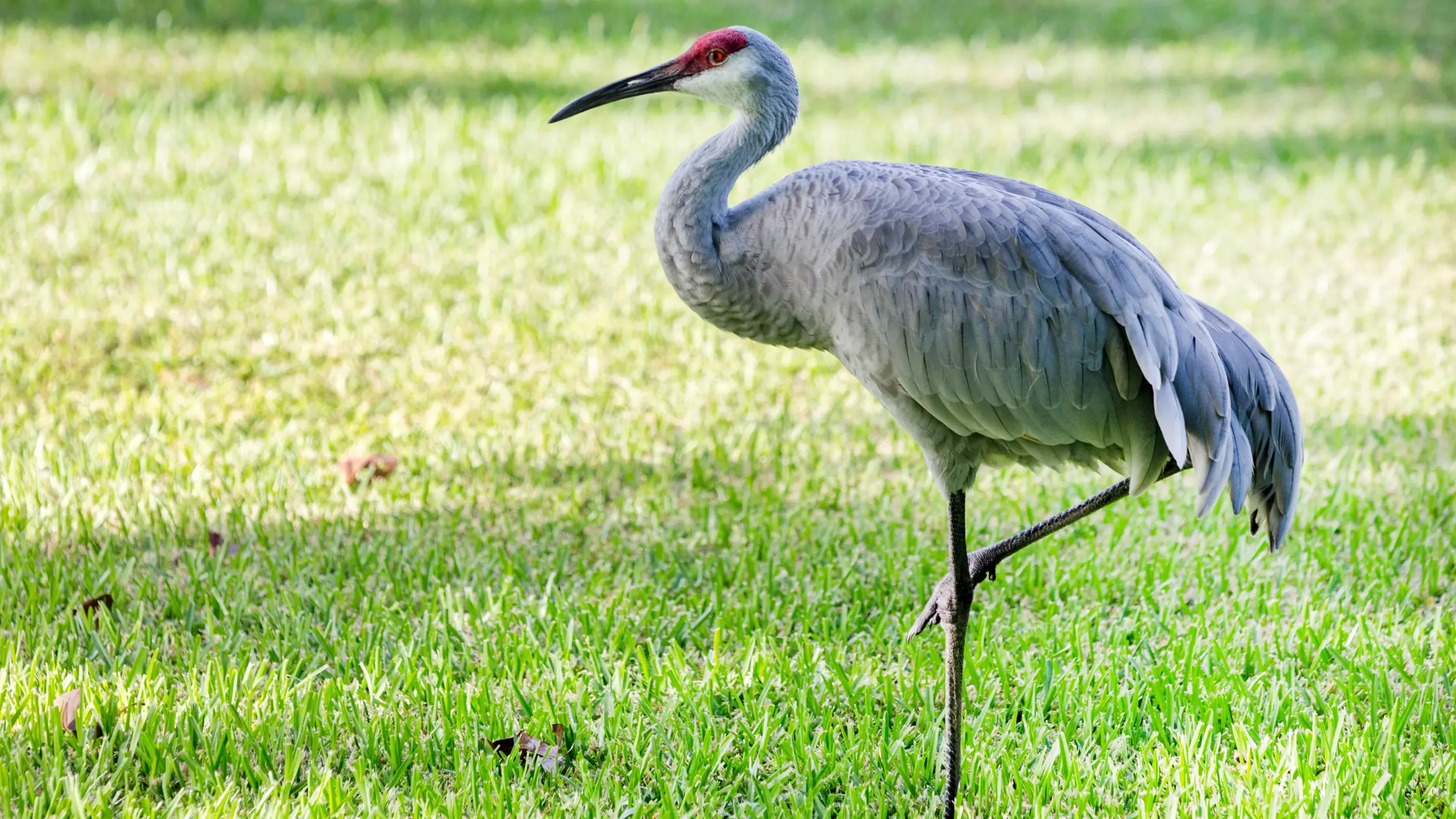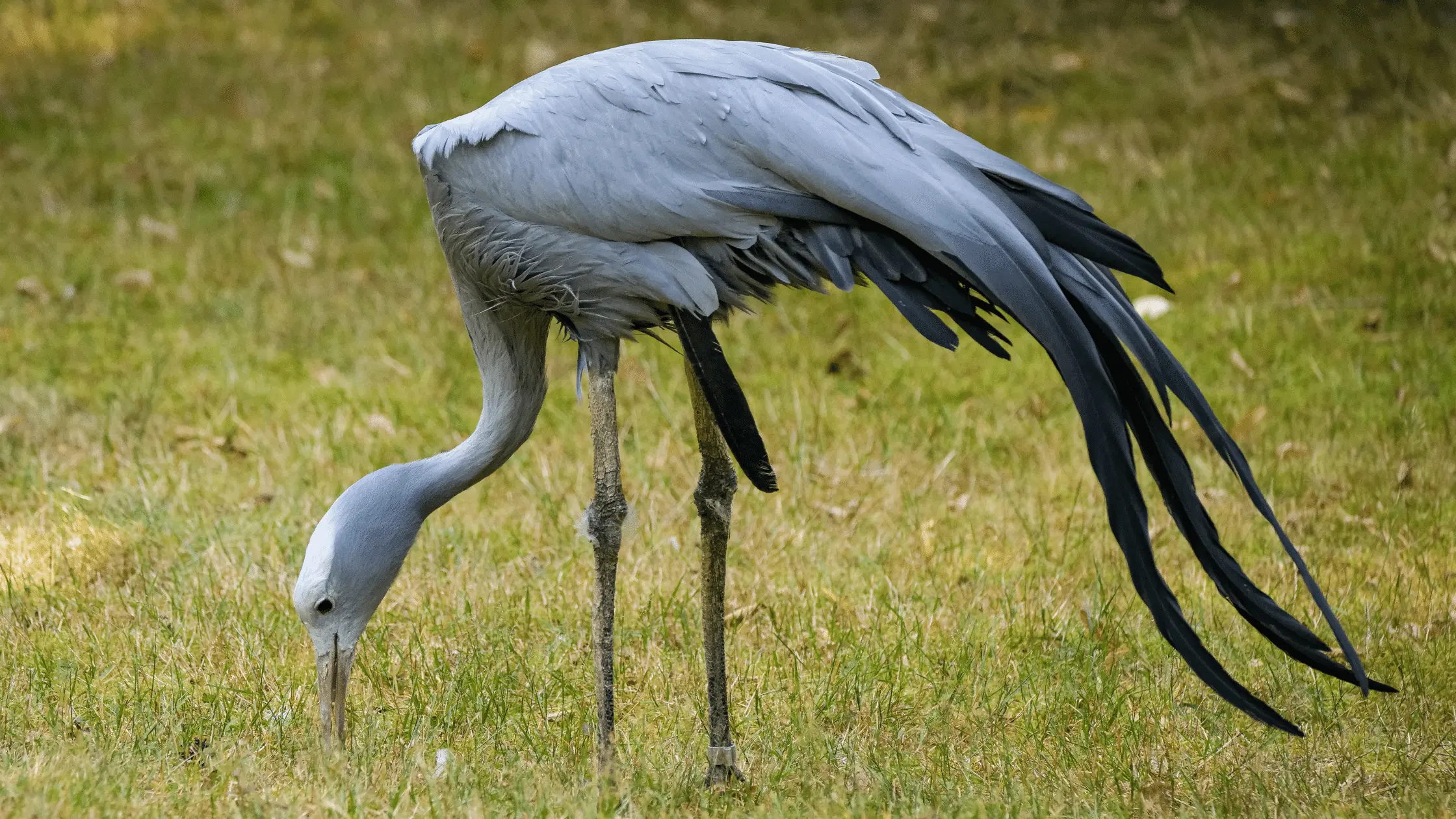Are Cranes and Herons the same? The short answer to that question is no. Yes, they both look alike, having large bodies, long legs, and gray color. However, they are not the same. I can quickly tell a crane apart from a heron just by looking at the formation of its head. A heron’s head is fluffy, while a crane’s is bold, red-colored, and devoid of feathers.
Cranes and herons also belong to different taxonomies. This means they aren’t even related at all. I am not ruling out the fact that these two birds are identical. But, with the right information, you can easily spot their differences.
What is a Crane?

I want to start by first helping you understand the physical appearance of a crane. Cranes are tall birds. They have the same physical appearance as herons and egrets, which usually causes people to mistake them for herons. Cranes have long necks and bills. However, cranes are heavier than herons and have a stockier build.
Cranes are usually white, gray, or brown. In the crane species, one crane has a distinctive golden color on top of its head, and it is the African crowned crane. The whooping crane has a wingspan of up to 2.1m.
Cranes are omnivores. They will eat both plants and animals. Crane species that live in marshy areas feed on berries, seeds, and small invertebrates. On the other hand, crane species that live in dryer areas will eat birds, reptiles, and grains. In terms of nesting, cranes usually build their nests in marshy areas. The only exception is the crowned crane that builds its nest in low trees.
What is a Heron?

Herons also have long necks and legs. They belong to the family Ardeidae, and they live in freshwater and on the coast. They are usually smaller in size when compared to the crane, and their feathers are fluffy. Herons are very adaptable, and they can be found in various climate conditions all over the world.
You will find herons in lakes, freshwater wetlands, and ponds. They like to feast on fish, frogs, and other aquatic animals. The difference between a crane and a heron in terms of diet is that the latter is more carnivorous. Herons can feed on small reptiles and even birds that are weak and small.
Herons have an S-shaped neck, thanks to the six vertebrates in their neck. When the heron is flying, its neck will retract and extend. This is quite a sight to see. Herons partially migrate, and they are very mobile birds. The heron will usually migrate after their breeding season.
Crane Vs. Heron: Head

The difference between a crane’s head and a heron is very noticeable. While the head of a crane is red-colored and bare, the head of a heron is full of feathers.
A crane’s neck is short compared to that of a heron. Cranes will stick their neck forward as they fly, while the heron will curve its neck into an S-shape. So, if you ever see a bird flying and you aren’t sure if it’s a crane or a heron, look at the positioning of its neck.
Crane Vs. Heron: Differences in Body Structure
Depending on the species you are looking at, there are both big and small birds in the crane and heron species. Averagely, the crane is a more giant and stocky bird, while the heron is a small and medium-sized bird. There are differences in weight, wingspan, and length when you put two similar-sized species of the two birds side by side.
The crane is larger and taller than a heron. However, in terms of neck length, the heron has a longer neck and beak than a crane. The smallest species of a heron is the dwarf bittern, and it measures about 10 to 12 inches in length. The Demoiselle crane is the smallest crane, which measures approximately 35 inches long. So, you see, the crane still wins in terms of size.
Crane Vs. Heron: Neck
We can’t talk about cranes and herons without talking about their necks. The neck is one of the most recognizable features of heron. When in flight, the heron will curve its neck, forming the letter “S.” However, when the crane is flying, it will stretch out its neck.
Crane Vs. Heron: What Taxonomy Do They Belong To?
The crane isn’t related to the heron. Despite their striking resemblance, they are not similar. The crane belongs to the family Gruidae, and they also belong to the order Gruiformes. The word Gruidae means “crane,” while the word Gruiformes means “crane-like.” The family Gruidae has 15 other species.
On the other hand, the heron belongs to the order Pelecaniformes and the family Ardeidae. The family Ardeidae boasts 72 different species.
Crane Vs. Heron: Diet
Cranes and herons will usually eat near a body of water. If you can get close enough when you see them eating, you may be able to tell them apart. I previously mentioned that cranes are omnivores, meaning they will eat animal and plant matter. It doesn’t matter where; they can eat the plants and animals in the water and ground.
Herons are carnivores. This means that they prefer to eat aquatic animals. When a crane has babies, she will take them to the food. On the other hand, a heron brings food to her babies, just like most birds.
Crane Vs. Heron: Nesting and Mating Behavior
Cranes are monogamous, which means that they will mate for life. On the other hand, Herons aren’t as committed to relationships as the crane. So, a heron will often change its mate.
These two birds also show variances when it comes to their nesting behavior. While a crane will nest on the ground, a heron will make its nest in trees. Cranes cannot live on trees and like to live alone with their mates. A heron, on the other hand, lives in colonies.
Crane Vs. Heron: Voice
The crane has a loud bugling call that rattles. The call of a heron is more of a croak. If you train your ears to differentiate birds by sound, you will become an expert bird watcher because you don’t even need to see any physical differences to tell birds apart. However, telling birds apart by sound remains quite hard.





